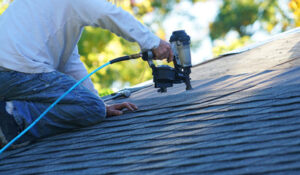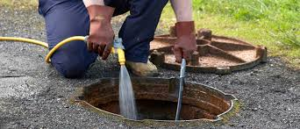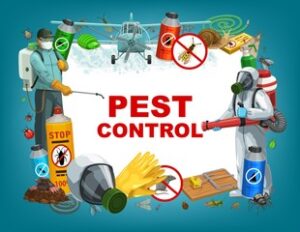Having a whole house generator can save your food, medical devices, and comfort in a power outage. It is important that homeowners understand the process of a home standby generator installation.

Electrical work on a generator should be completed by licensed electricians. For a gas generator, a plumbing permit may be needed before installing the transfer switch or running natural gas. Contact Generator Installation In Spring TX for professional help.
Site surveys examine a specific area to gather data and information. They are often used in construction projects to gather information about the space where a project will take place and what obstacles may be encountered. Surveyors typically conduct site surveys, although other types of engineers and test technicians can also perform them.
The scope of a site survey varies by project. For example, a building survey would usually inspect structural elements and mechanical-electrical-plumbing systems. A wireless network site survey, on the other hand, would examine RF signal strength and what equipment is needed to deliver the desired coverage.
A site survey should always start with a walkthrough and discussion with the client or stakeholder. This allows the technician to understand what is happening on the property and determine what needs to be done. It also helps the customer or stakeholder set expectations and reduces confusion later on. Getting a technical expert involved in the early stages of a project can help avoid costly mistakes later on.
During the site survey, the professional will identify any artificial or natural obstacles that could be in the way of the project. This includes things like drainage patterns, existing structures, and the surrounding environment. The engineer can then make adjustments to the construction plan to address these issues.
In addition, a survey will also collect information about the terrain and the soil type. This will be useful for the foundation’s design and layout. A variety of field measurements and tests will be conducted to gather this data, including digital elevation models and soil samples.
The information gathered during a site survey will be digitized and made available to all project stakeholders. This enables them to make informed decisions and speed up the review and approval process. It can also help minimize risks and ensure that the project complies with local regulations.
The value of a site survey is repaid many times over in reduced project costs, faster realization of revenue gains, and fewer risk mitigation costs down the road. For this reason, it is a crucial step in any construction project.
Electrical Permit
If your generator is going to connect directly into your home’s electrical panel, you will need a permit. This will involve laying out new circuits, identifying the correct wire thickness and understanding how much your home’s power supply can handle. All of these details are important because incorrect wiring can lead to short circuiting and fire. It’s important to work with an experienced electrician during this process to ensure that everything goes smoothly.
You’ll also need a permit if your generator will run on natural gas. If you’re converting from propane to natural gas, your plumber will need to file for a separate plumbing permit as well. In addition to ensuring that your new generator is safe for your home, this permit will also give you a guarantee that the installers have been properly trained.
If you want to run a generator off of your electric grid, you will need to have it installed with a transfer switch by a qualified electrical contractor. This switch will prevent back feed into the electricity lines during an outage, which could electrocute utility workers. It will also keep the generator from causing damage to your electric service when it’s turned off.
Your permit application must include a diagram of your generator and all associated wiring. It must also include a load calculation. The calculated load must not exceed the generator’s rating. It must be based on actual usage during a power outage and the maximum use of the generator per week.
A permit is also needed if you’re installing a permanent standby generator. The generator will need to be located in a setback area, and it must be protected from the elements with landscaping and fencing. If you’re planning to install a generator in your backyard, it must be separated from all neighbors’ properties by at least five feet.
If you perform any type of work without a permit, it’s illegal and can result in fines. The person who performs the work may also be subject to violations, summonses or court appearances. Before beginning any work on your property, make sure to call Miss Utility at 811 to have the state’s utility lines marked. Failing to do so could cost you a fortune in fines and repairs.
Plumbing Permit
Plumbing permits are necessary whenever you are installing or replacing piping and fixtures that deal with the water system. This includes new construction as well as renovations, remodels, and repairs of existing commercial or residential structures. If you are unsure whether your project will require a permit, check with your local regulations. It’s important to follow these standards to avoid fines or other legal action.
Generally, plumbing work is regulated by local and state laws as well as national codes. These codes are put in place to ensure that the work performed by plumbers is of a certain quality. However, the specific rules and requirements of each jurisdiction vary. The best way to determine if your project requires a permit is to contact the city office where you live and ask them. They will be able to provide you with an application and inform you of any additional requirements that may apply.
Some projects that will require a permit include large jobs such as drain line replacements, sewer replacements, and moving the location of a water heater. You will also need a permit if you are adding an additional bathroom or kitchen to your home. Other projects that will require a permit include commercial remodeling, renovations, and changes in the layout of a space.
All plumbing jobs must be performed by a licensed professional or by a person who has been approved by the local health department as an apprentice of a master plumber. Licensed professionals must also submit copies of their license and insurance to the local government before they can begin working on a job.
There are also some situations where a plumbing permit is not required. For example, you do not need a permit to replace or repair faucets, valves, or toilets that are already in your home.
In some instances, a special permit will be needed for the installation of special fixtures such as backflow devices, booster pumps, fire pumps, chemical waste drainage systems, multi-purpose sprinkler systems, and vacuum waste systems. These are typically issued to contractors with the proper certifications and must be submitted by an engineer with plans and drawings that have been designed and approved.
Generator Size
If you choose a generator that’s too small for your power needs, it may try to supply more energy than it can handle and overheat. This can damage or destroy the generator itself and any appliances and devices connected to it.
A good way to determine how much generator power you need is to calculate your total electrical usage and peak demand. The best method for this is to use an electrician-approved power consumption calculator. Another option is to measure your business’s square footage and then use a formula to estimate the generator size you need. This method works well for retail operations like grocery stores, restaurants or convenience stores.
To help with this calculation, you’ll need to know the energy ratings of your essential household appliances and how they consume electricity. Most manufacturers will list the running wattage for their equipment on their product packaging or website. You’ll also need to understand that many appliances require more power to start than they do to run continuously. This additional energy is called surge wattage, and it’s important to include it in your calculations.
Once you have a clear understanding of the power needs of your home, it’s a good idea to choose a generator with a running wattage slightly higher than your calculated needs. This extra capacity, often referred to as headroom, helps ensure that the generator can meet your power requirements even if you add more items or upgrade them in the future.
Commercial generators are also available, and the power needs of your business will vary depending on your specific applications. For instance, a medical facility requires consistent power to keep life-saving equipment like ventilators operating. For this reason, it’s a good idea to consult with a professional to make sure you get a generator that’s large enough for your power needs.
Commercial generators can be fuelled with either gas or diesel. The generator can be equipped with its own fuel tanks or fueled through a connection to existing fuel tanks. These tanks can be located above ground, below ground or on the generator frame itself, depending on your application and storage capacity needs.








